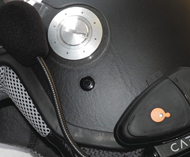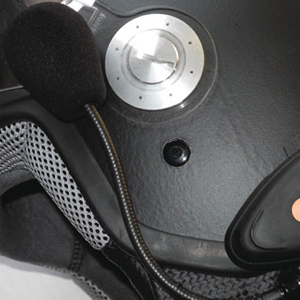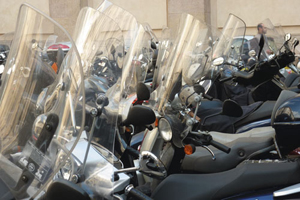
Ten of the best 
Don’t go away without these!
Naturally, touring is one of our favourite pastimes and as you probably know, there are certain things that can make the journey an even more enjoyable experience. Not only will accessories make the trip better, they may even entice you to ride further and see more of our big wide country. To help make your expedition a more pleasurable encounter, we’re listing what we think are the 10 best touring accessories.
1. Navigation systems
The Global Positioning System (GPS) ranks only second to the ubiquitous mobile phone when it comes to the gadgets and gizmos we wouldn’t dare leave home without. Only a few years ago, a GPS for motorcycles was Star Wars-type stuff, with few people owning them and fewer still understanding how the hell to work the things. Instructions were obtuse and satellite signals slow, and the paper map was still the way to go. That was then; now GPSs are relatively idiot-proof and have become standard equipment for the savvy tourer.
Trip-planner programs are available that allow personalised routes to be uploaded from a home computer or internet to an onboard navigation system. Weather and traffic conditions, accommodation, restaurants, petrol stations, attractions and alternative routes can all be part of your digital plan. Don’t forget a mounting system when considering this accessory.

2. Audio
The days of riding while whistling to yourself like a crazy person, or with a Walkman stuffed in your jacket and your ears squashed under your helmet, are long gone. Now most tourers come with an audio plug and some of the bigger ones come with a full audio system fitted as standard.
The latest advance in mobile phones also allows their inbuilt MP3 player to be plugged into your bike. Almost all touring bikes have the ability to interface with an iPod/MP3 player, and the best ones also integrate the player’s navigation menu into their instrument displays. Some can connect via Bluetooth, which brings me to number 3!
3. Communication system
The ability to communicate with one another hands-free, or have your music wirelessly plumbed into your ears, separates us from the primitive civilian. While motorcycle hand signals are still used by the old school, wireless technology makes them a quaint novelty.
For immediate communication, helmet-to-helmet/bike-to-bike intercom systems are the way to go. These systems can also be voice-activated.
The downside to Bluetooth is that a helmet headset is required and range is limited (generally restricted to unobstructed line-of-sight), but for helmet-to-helmet chatter, and in most short-range situations (some makers claim a kilometre), bike-to-bike communication is practical. We’ve previously tested the Cardo Scala Rider G2 and it has worked well.
Also in this communication category are Bluetooth headsets that handle the functions of a mobile phone. Since our hands are otherwise engaged, an urgent call can be made or answered without compromising our safety, or even slowing down (just remember to check with your local state or territory authority for regulations). This is a lot better than the old stop ‘n’ dial, even if does appear we’re talking to no one but ourselves. Bluetooth creates a dedicated wireless connection to a variety of communication instruments, not just mobile phones. It can be a handy companion for any rider.
4. Windshields
While some consider wind in the face an integral aspect of the primal biking experience (yes, I put my hand up), others prefer to keep bugs out of their teeth and/or off their visor. The fact is, a windshield can keep a lot of road debris, suicidal insects, wind, heat, cold and even rain off your body — strength-sapping elements that come blasting at you with exhausting force. When duelling with the wind, a shield can be your greatest ally.
But you have to pick the right one otherwise you will end up with buffeting and headaches. Windshields come in a variety of sizes, colours and tints, from quarter to full, crystal clear to opaque, offering varying degrees of protection and aerodynamics. Some tourers are fitted with electronically adjustable windshields, which is one of the most practical features we’ve seen.
Since no one as yet has invented any practical wipers for motorcycle windshields, it’s better to have a shield mounted a couple of inches below your line of sight. This can create a relatively calm pocket around you, with air rushing over a helmet rather than in your face. If it rains, you can look over the screen; if it’s cold, you can tuck under. If the shield is too short, it won’t offer much touring protection.
5. Electric heat
Some say true biking is dead, lamenting the bygone days when hard men and women had to have fortitude and mechanical wit to operate a motorcycle. Others say good riddance to those days. Modernisation has allowed more people to join the ranks and has them riding longer, happier and through more nasty and miserable conditions.
When I was young and dumb I rode around in an unlined leather jacket with a pair of racing gloves, thin jeans and air flowing boots. On some days I would come home with blue fingers and thighs. Then I got my first pair of winter gloves and I woke up and realised what I’d been missing out on. Then came heated grips and, yes, they are the best things since sliced bread in cold conditions!
Nowadays, not only can you have electrically heated grips, you can also get heated seats and even floorboards. Add a heated vest and it’ll feel like you’re still in bed sipping that warm cappuccino. What’s next, air-conditioning? And don’t laugh — we’ve seen it!
6. Seats
If you’re sitting in the saddle for hours at a time, blood flow to the gluteus maximus is constricted, resulting in what is technically known as “numb butt”. This unpleasant condition can be relieved by stopping every hour or so, getting off your posterior and jogging around your bike, or having your passenger vigorously massaging said effected area.
Most motorcycle makers offer seat upgrades, usually going from firm to plush with the addition of foam and/or gel. A cheaper solution can be found in seat pads like the AirHawk, which can add comfort to the long-haul ride. Made of various kinds and combinations of gel, foam and memory foam, wrapped in leather, vinyl or sheepskin (faux or real), seat pads can be strapped down or simply sat on. But, if you get a sheepskin, make sure you buy a rain cover otherwise you will get a condition known as “wet butt” in the rain or in the morning after the dew has settled on it.
7. Backrests
This leads me to the next accessory that’s more suited to the long-distance rider — a back support. This gives your spine a break and takes the pressure off your butt and legs, making those 500-kilometre-plus days a lot more comfortable.
Backrests moved from the exclusive domain of passengers to the rider cockpit some years ago, with innovations that include removable rider rests for short-range cruising. Some factories offer seat upgrades that integrate adjustable backrests that can also serve handy anchor points when strapping down gear. Until the posh furniture makers build an armchair, a backrest is the next best thing to riding in your living room.
8. Cameras
So how are you going to remember all those great moments from your tour? Well, in this modern day and age there are a number of ways which, when combined, are the best things ever to relive your trip. Just about all of us have a handheld, point-and-shoot still camera but to enhance the experience, mount a GoPro Hero video and stills camera. Not long ago, the only option for taking a video camera along was to duct tape a clunky video camera atop your helmet like some kind of weird beanie.
The GoPro Hero is often used in motorcycle videos the world over and the camera fits into a waterproof case so you don’t have to worry about it.
9. Puncture repair kit
Punctures have a habit of happening in the most remote, far-from-anywhere places, so a puncture repair kit is worth double its weight in gold.
There are many kits to choose from but for tubeless tyres, a plug-type repair kit seems to be the best. These kits usually come with little gas bottles to inflate the tyre, or you can carry a collapsible hand pump as I do. The Bear has taken delivery of a small (and I mean small) air compressor that runs off the battery and he’ll be reporting on that soon.
10. Luggage systems
Of course, number 10 has to be a luggage carrying system. We all need to carry gear to make life easy on our trip, but depending on how much and what sort of luggage system you choose, life over the long-haul can be bliss.
We’ve tried many systems over the years and always found the Ventura rack and bag system works well. For those wanting something more flexible, Andy Strapz has a number of bags that can carry all sorts of gear. If you don’t want to strap something to your bike, the Kriega backpack carrying system is well worth the money. I have the R30 backpack and the US20 add-on bag, making 50 litres of capacity for a couple of days away. All of this is while riding in total comfort.
There are lots of luggage systems on the market but you really want to make sure they are waterproof and will fit your bike well. The last thing you want is for the bag to scratch your paintwork, but you can always put some duct tape on the fairings to protect them if necessary.
So there we go — 10 things that will enhance your touring experience. I’m sure you all have other ideas of what makes touring even better so let us know; we’d love to hear about them.
SW
